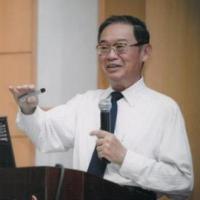SystemX Affiliates: login to view related content.

Bell Laboratories (also known as Bell Labs) was established in 1925 as a research and development organization of the American Telephone and Telegraph Company (AT&T). At its peak (from mid 1940s to late 1980s) Bell Labs was considered the most prominent research institution in the world, having 30,000 staff with 4,000 Ph.Ds and an annual budget of US$3 billions. There have been seven Nobel Prizes awarded for work completed at Bell Labs.
For 90 years, Bell Labs has discovered or invented a wide range of revolutionary technologies in communication and computing. The most important discovery at Bell Labs is the transistor effect discovered by Bardeen, Brattain and Shockley in 1947. Transistors replaced vacuum tubes and ushered in the Modern Electronics Age. Bell Labs also invented many important semiconductor devices including the thyristor, HBT, JFET, silicon solar cell, MOSFET, IMPATT diode, and CCD. In addition, Bell Labs developed most of the basic semiconductor processing technologies including the zone refining, ion implantation, growth of single-crystal silicon, diffusion, oxide masking and molecular-beam epitaxy.
I was very lucky because my years at Bell Labs (1963~1989) were in the Golden Era of the company. Bell Labs provided a stimulating and challenging environment in which I was welcomed, inspired and abundantly assisted. My main contribution at Bell Labs was the discovery of the floating-gate memory effect with Dawon Kahng in 1967. This seminal discovery has given rise to a large family of memory devices including EEPROM and Flash memory. The floating-gate memory effect is probably the 2nd most important discovery in Bell Labs’ history, because it has revolutionized the information-storage technology, ushered in the Digital Age, and brought unprecedented benefits to humankind.
Dr. Simon M. Sze received his B. S. degree from the National Taiwan University, M. S. from the University of Washington, and Ph. D. from Stanford University, all in Electrical Engineering.
Dr. Sze was with Bell Laboratories from 1963 to 1989 as a member of the Technical Staff. He joined the National Chiao Tung University (NCTU) from 1990 to 2006 as a Distinguished Chair Professor. At present, he is an Honorary Chair Professor at NCTU. Dr. Sze has served as Visiting Professor to many academic institutions including the University of Cambridge, Delft University, Soochow University, Stanford University, Swiss Federal Institute of Technology, and Tokyo Institute of Technology.
He has made fundamental and pioneering contributions to semiconductor devices, especially the metal-semiconductor contacts, microwave devices, and submicron MOSFET technology. Of Particular importance is his discovery with Dr. D. Kahng of the floating-gate memory (FGM) effect which has subsequently given rise to a large family of memory devices including EPROM, EEPROM and Flash memory. FGM has enabled the development of all modern electronic systems such as the digital cellular phone, tablet computer, personal digital assistant, smart IC card, digital camera, digital television, portable DVD, MP3 music player, pacemaker, implantable defibrillator, global positioning system (GPS), and anti-lock braking systems (ABS).
Dr. Sze has authored or coauthored over three hundred technical papers. He has written and edited 16 books. His book “Physics of Semiconductor Devices” (Wiley, 1969; 2nd Ed, 1981; 3rd Ed, 2007) is one of the most cited works in contemporary engineering and applied science publications (over 40,000 citations according to Google Scholar). Dr. Sze has received the IEEE J. J. Ebers Award, the National Endowed Chair Professor Award, the Flash Memory Summit Lifetime Achievement Award, and the National Science and Technology Prize. He is a Life Fellow of IEEE, and ITRI Laureate, and Academician of the Academia Sinica, a foreign member of the Chinese Academy of Engineering, and a member of the US National Academy of Engineering.


